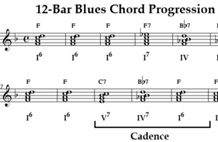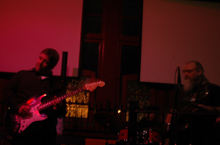
Boston Blues

Fading blues and closing cafés
Like most of us, musicians are severely impacted by the downturn in the economy when venues go out of business and disposable income drops.

It's not what it was
People's musical tastes have changed over time and amid different social conditions. That has been the case with blues music in Boston over the past half-century.

Plucking the strings hard for the blues
A journey of a young bluesman, his passion and his dream of a future in another place where the music scene is more vibrant.

Down in the "Tubes"
They play for you every day on your way to work. They cherish freedom and have high aspirations, too.
Brief History of Blues Music
Blues music developed in the 1890s in response to the hardships endured by generations of black people. Initially the songs consisted of field hollers, which served as a means of communication among plantation workers and slaves.
The earliest blues music, known as country or delta blues, was a product of the 19th-century Southern rural experience after Emancipation. Itinerant singers, guitarists, or harmonica players traveled around singing about love, freedom, sex, loneliness and the sorrows of life.
The first recording of the blues was made in 1895 and the first blues song recorded was George W. Johnson's "Laughing Song."
It was said that W.C. Handy, musician and bandleader of the Mahara Minstrels, came across the blues in a Tutwiler, Mississippi train station in 1903. According to Handy, while he was waiting for the train he heard the sound of a man running a knife against the strings of his guitar while he sang, "Goin' where the Southern cross the Dog." Handy was struck by the music. In 1912 Handy published "Memphis Blues." He was among the first to publish a song with "blues" in the title.
Important early blues musicians include Charlie Patton, Son House (who developed the bottleneck slide technique), and Robert Johnson.
In the early 20th century, folk singers migrated north bringing the blues with them. Country singers joined the New Orleans and Fast Western pianists' migration, and brought their style to Chicago, Detroit, Cleveland, and New York. Classic blues singers along with these musicians introduced their blues style in clubs, theaters, and dance halls.
The blues came to the forefront in 1920, with Mamie Smith's recording of "Crazy Blues." The record sold 75,000 copies the first month of release.
Another landmark in blues history was the release of Blind Lemon Jefferson's "Long Lonesome Blues" which set the stage for a new era of the blues. However, the Depression of 1929, hit many blues singers hard.
After World War II, the center of blues activity moved to cities such as Chicago, where the musicians like Muddy Waters, BB King and Buddy Guy intensified the sound by amplifying the guitars and emphasizing the drums.
During the 1960s, white musicians from the US and England discovered the old recordings of the early bluesmen. This led the way to a blues revival.
Today, the blues is recognized for its influence on other genres of music, such as rock and roll, rhythm and blues, jazz, country, rap and hip-hop.
Sources and links to related sites:
The History of Blues Music: The Classic Era
History of Blues
The Blue Highway
Deep Blues: A Musical and Cultural History of the Mississippi Delta by Robert Palmer
The History of the Blues: The Roots, The Music, The People by Francis Davis
The Devils Music: A History of the Blues by Giles Oakley

